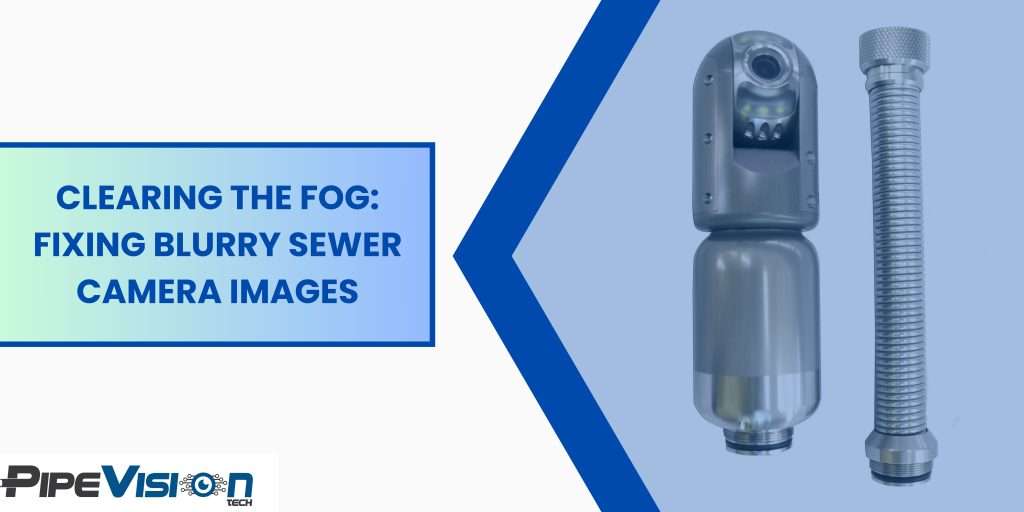Blogs, Sewer pipe camera
Clearing the Fog: Fixing Blurry Sewer Camera Images
In the realm of sewer inspections, clarity is paramount. Yet, the challenge of blurry sewer camera images can cloud your diagnostics. Fear not! In this troubleshooting guide, we unravel the mysteries behind blurry visuals, helping you identify causes and providing practical solutions to ensure clear and accurate images during inspections.
Understanding the Blurriness Dilemma
The Importance of Clear Visuals
Clear visuals are the backbone of effective sewer inspections. Blurry images can impede accurate diagnostics, potentially leading to misidentifications and overlooked issues within the plumbing system.
Common Causes of Blurry Images
1. Dirty Lens: Residue or debris on the camera lens can distort the image.
2. Focusing Issues: Incorrect focus settings can result in blurry visuals.
3. Water Droplets: Moisture inside the pipes can create water droplets on the camera lens.
4. Damaged Equipment: Wear and tear on camera components can impact image quality.
Troubleshooting Blurry Sewer Camera Images
Step 1: Lens Cleaning
Issue: Dirty Lens
Solution: Gently clean the camera lens with a soft, lint-free cloth and an appropriate cleaning solution. Ensure thorough removal of any residue or debris.
Step 2: Focus Adjustment
Issue: Focusing Issues
Solution: Adjust the camera focus settings according to the specifications in the user manual. Perform test scans to verify image clarity.
Step 3: Moisture Management
Issue: Water Droplets
Solution: Minimize moisture by using a dehumidifier or introducing dry air into the pipes. Ensure the camera has proper ventilation to prevent condensation.
Step 4: Equipment Inspection
Issue: Damaged Equipment
Solution: Inspect the camera and related components for signs of damage. Replace any worn-out parts and ensure all connections are secure.
Preventive Measures for Clearer Inspections
Preventive Measure 1: Regular Maintenance
Conduct regular maintenance checks to keep the camera lens and equipment in optimal condition. Clean the lens after each use, and schedule professional inspections if needed.
Preventive Measure 2: Moisture Prevention
Implement moisture prevention measures, such as using waterproof covers or air purging systems to reduce the chances of water droplets affecting the camera lens.
Preventive Measure 3: Protective Storage
Store the sewer camera in a protective case when not in use to shield it from environmental elements that could lead to damage or blurriness.
Conclusion
Clearing the fog from your sewer camera images is within reach. By understanding the common causes of blurriness and following our troubleshooting guide, you can ensure that your sewer inspections are defined by precision and clarity.
PipeVisionTech: Clarity at Every Turn
For cutting-edge sewer camera solutions that prioritize clarity, trust PipeVisionTech. With a commitment to excellence, PipeVisionTech provides tools that elevate your sewer inspections to new heights.
Frequently Asked Questions
Q1: How often should I clean the sewer camera lens?
Clean the lens after each use and more frequently if you encounter particularly dirty environments.
Q2: Can I use any cleaning solution for the camera lens?
Stick to Mila-friendly cleaning solutions. Avoid harsh chemicals that could damage the lens coating.
Q3: Why does focusing become an issue with sewer cameras?
Focusing issues can arise due to changes in the environment, vibrations, or manual adjustments. Regularly check and adjust focus settings as needed.
Q4: Are there preventive measures to avoid blurry images in wet conditions?
Using waterproof covers, ensuring proper ventilation, and implementing air purging systems can help prevent blurry images in wet conditions.
Q5: Can blurry images indicate a more significant issue with the sewer camera?
While blurry images are often caused by common issues, persistent problems may indicate underlying damage. Consult the user manual and seek professional assistance if needed.


